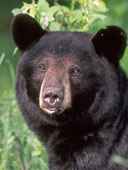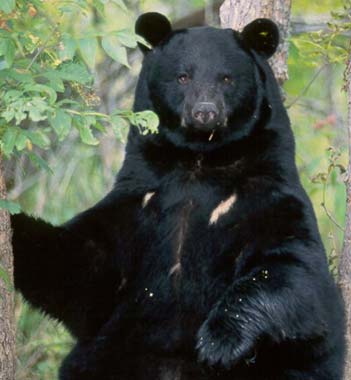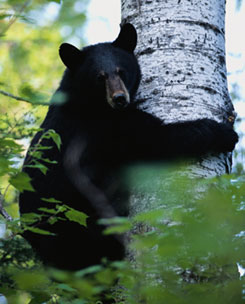|

The black bear is one of the Poconos' more famous animals residents, and definitely one of my personal favorites. It's no secret that Pennsylvania has one of the largest black bear populations in the nation. The bear population in our state is estimated at 15,000 bears, over one third of that is estimated to be in the Pocono area, Pennsylvania trails only Alaska and Washington state in black bear population.
Bears are powerfully-built animals. Adults range from 140 to 400 pounds, with rare individuals weighing more than 800 pounds, the biggest bears in the state have been found in the Pocono area. Most Pennsylvania bears are black, although a few are cinnamon color. Extremely agile for their size, bears sometimes stand erect on their hind feet to see and smell better. Top speed is 30 miles per hour over a short distance. Black bears climb easily and swim well. 
Bears are mainly nocturnal, but they sometimes feed and travel by day. Alert and wary, they tend to avoid open areas. Individuals are solitary. While most bears will run from a human, a female with cubs should be respected and on rare occasions might actually attack if she feels her young are in danger. Bears find food mainly by scent. They are opportunistic feeders, with a largely vegetarian diet. Common foods are fruit (including large amounts of many kinds of berries), mast (acorns and beechnuts), succulent leaves of hardwoods, grasses, insects (including eggs and larvae), plant roots, amphibians, reptiles, small mammals, fish, carrion and garbage.

It is common knowledge that bears hibernate throughout the winter, but many people do not know that while in hibernation bears do not uinate or deficate, their waste is broken down into a protein that is reabsorbed by their bodies. In addition, female bears give birth and nurse while in hibernation.
Pocono Wildlife Page 2 |
